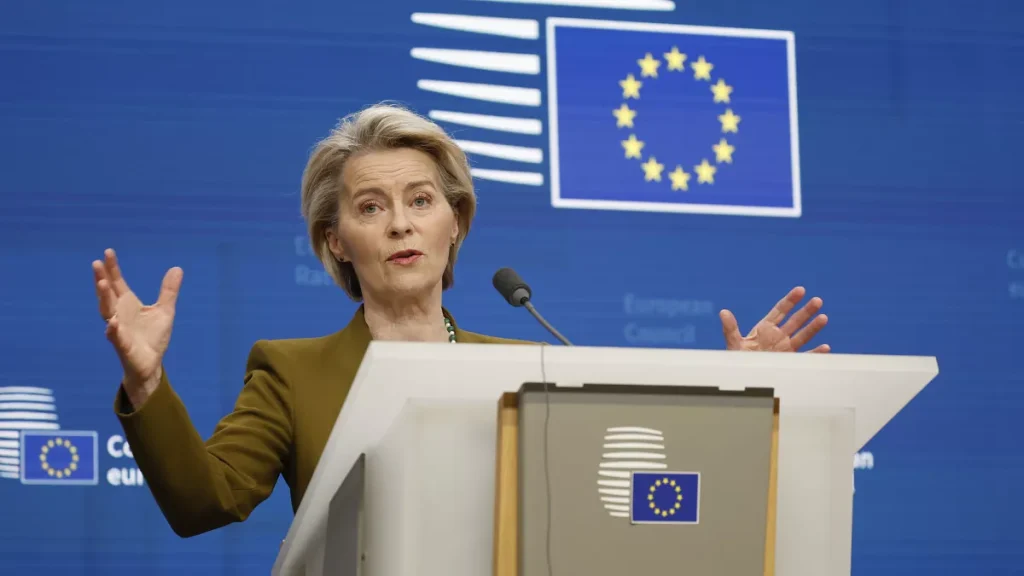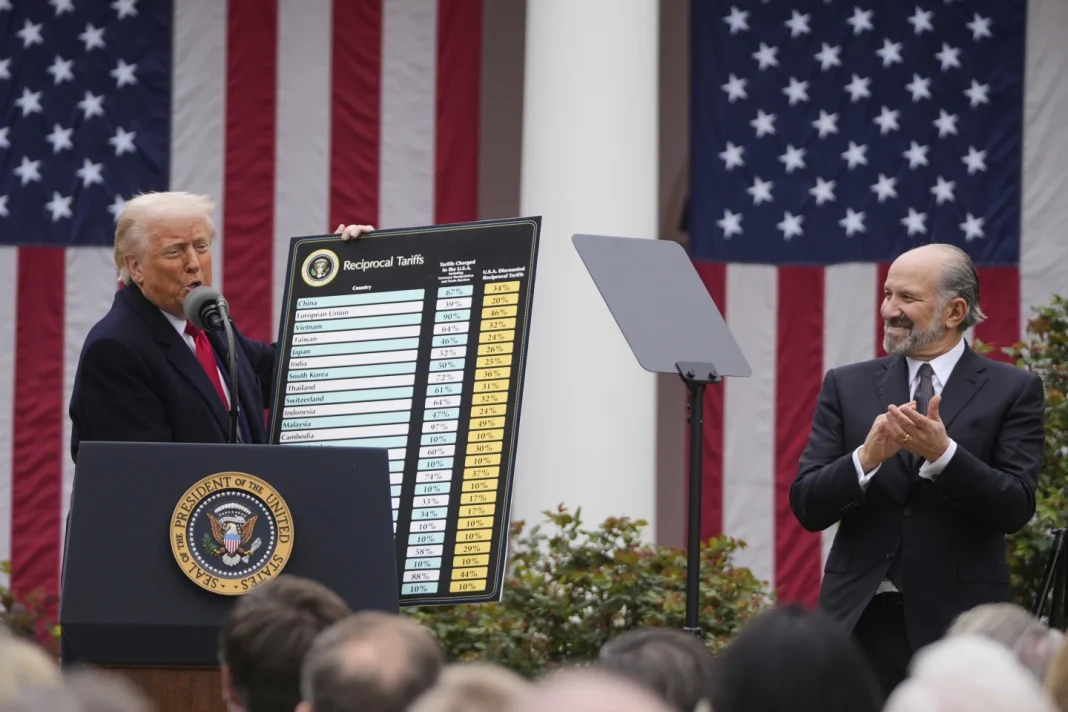【New York ATM= Ahmed Fathi】
When President Donald Trump announced his latest salvo in the global trade arena—reciprocal tariffs on all imports to the United States—the world responded not with strategy, but with shock. Tariffs on Chinese goods soared to a punishing 145%, with Vietnam facing a 46% hike, and even traditional U.S. allies in Europe suddenly caught in the economic crossfire.

In response, the World Trade Organization (WTO) slashed its 2025 global trade forecast from a 3.0% increase to a 0.2% decline, citing the resurgence of U.S. tariffs and broader economic spillovers as key factors. WTO Director General Ngozi Okonjo-Iweala expressed concern about the contraction and its potential impact on global GDP, financial markets, and particularly on developing economies.
But one can’t help but ask: Why the surprise?
Trump’s economic playbook has always worn its intentions on its sleeve. From the early days of his first presidency, he made clear that reciprocity, not multilateralism, was the core of his trade philosophy. He withdrew the U.S. from the Trans-Pacific Partnership, picked fights with the WTO, and slapped steel and aluminum tariffs on friends and foes alike. This isn’t a deviation—it’s the logical extension of a long-telegraphed strategy.
So why is the world panicking now?
There is a kind of global amnesia at play, one that seems to underestimate both the resolve and the reach of the U.S. economy. At $27 trillion and growing, the American economy remains the largest and most resilient in the world. More importantly, it is home to the single largest consumer market on the planet, and that comes with enormous leverage. When Washington decides to weaponize access to that market—especially through tariffs—the ripple effects are swift and severe.
But perhaps what is more revealing than the panic itself are the underlying assumptions it exposes. For decades, the global economy has relied on the idea that the United States will always remain an open market, even when the political winds shift. That assumption no longer holds. Trump has now shattered the illusion that access to U.S. consumers is guaranteed.
This raises uncomfortable questions:
– Has the global economy become dangerously dependent on a single market?
– Is the current panic an overreaction, or a necessary wake-up call to diversify trade strategy?
– Why haven’t more nations, especially in the Global South, prepared for a post-American trade order?
Some suggest the answer lies in psychology as much as in economics. The threat is not just financial—it’s symbolic. Trump’s tariffs represent a breakdown of predictability in the world’s largest economy. When the rules of engagement change overnight, uncertainty becomes the new currency, and uncertainty is poison to global trade.
Even among America’s closest partners, there is a sense of betrayal. European nations, long accustomed to preferential treatment, now find themselves lumped into the same penalty structure as strategic rivals. The European Union’s exports—from luxury cars to agricultural goods—are facing double-digit duties, prompting emergency meetings in Brussels and speculation about retaliatory measures.

European Commission President Ursula von der Leyen declared that “the West as we knew it is dead,” highlighting the erosion of traditional Western alliances and contrasting current U.S. unpredictability with the European Union’s stability and commitment to democracy and global trade.
And then there’s China. The already strained U.S.-China trade relationship has now escalated into open economic warfare. A 145% tariff is not just a tax—it’s a wall. Chinese firms, particularly in tech and manufacturing, are being effectively priced out of the U.S. market. The consequences will be enormous: disrupted supply chains, stalled investments, and a further decoupling of the world’s two largest economies.
China retaliated with tariffs of up to 125% on U.S. goods, and its Commerce Ministry stated, “Even if the U.S. continues to impose higher tariffs, it will no longer make economic sense and will become a joke in the history of world economy.”
But as exporters brace for impact, the overlooked side of the equation is the American consumer. These tariffs will not go unnoticed on the shelves of Walmart or in the showrooms of Ford and GM. Prices will rise. Product availability will tighten. While Trump’s base may initially cheer the “America First” rhetoric, they too will feel the sting—eventually.
Yet, within this chaos lies an under-reported dynamic: opportunity.
While the tariffs have dealt a direct blow to large industrial economies, they have opened a window for smaller, emerging economies—many of which have been spared the heaviest penalties. Nations in Latin America, Sub-Saharan Africa, Southeast Asia, and parts of the Middle East that face only a 10% tariff rate are now positioned to expand their exports and footprints in the U.S. market. For them, this may be the moment to step out from under the shadows of larger trading giants and stake a claim in global supply chains reshaped by political necessity. The road won’t be easy, but the chance to diversify and capitalize on realignment is real.
So, the question becomes: Is this sustainable?
Trump is gambling that short-term pain for long-term gain will resonate with voters. He’s betting on a revival of domestic manufacturing, a redirection of supply chains, and a reassertion of American economic primacy. But the transition will be costly—and not just financially. It may isolate the United States diplomatically, weaken multilateral institutions, and embolden rivals to create parallel systems of trade and cooperation that bypass Washington entirely.
And what about the rest of the world?
This may be the moment for a global reset. Countries that have long relied on access to American consumers must now consider building more robust domestic markets.
INPS Japan/ATN
Original Link: https://www.amerinews.tv/posts/trump-s-tariff-blitz-tantrums-and-trade-wars-and-the-world-s-strategic-amnesia


